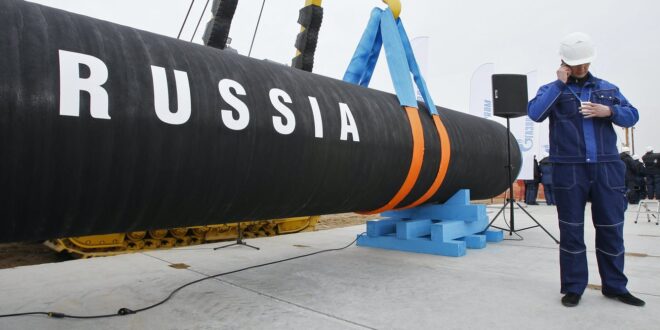Trade at Russia’s three largest ports has been surging and is approaching prewar levels despite sweeping sanctions by the Group of Seven (G7) leading economies, according to a new report.
“Activity in Russia’s ports is surprisingly high. For the first time since the outbreak of the Ukraine war, the volume of goods unloaded at Russia’s three largest container ports, St. Petersburg, Vladivostok, and Novorossiisk, is approaching the levels seen at the outbreak of the war,” the Kiel Institute for the World Economy in Germany wrote in a report published on September 7.
The United States and its allies imposed harsh economic sanctions on Russia after it launched a full-scale invasion of Ukraine in February 2022, banning high-tech exports needed for industrial production and cutting off many of its banks from Western financial markets.
Many economists expected a steep contraction in Russian economic activity now that it was isolated from the West.
But after an initial steep fall in imports following the imposition of sanctions, Russia has been able to evade the restrictions and build new supply chains to get its hands on key technology and other goods.
Moscow has rerouted Western goods through third countries such as Turkey and Kazakhstan, data shows, and Russia’s economy is now forcast to grow more than 2 percent this year.
“Where the goods are coming from is not clear from the container ship movements, but Russia seems to be rejoining world trade,” the Kiel Institute wrote.
The surge in imports has been driven by both the needs of Russia’s military-industrial complex as well as citizens’ demand for consumer goods.
Russia has been splurging on the military, causing a large budget deficit, as its nearly 19-month invasion of Ukraine falters. The massive government spending has been a boon for Russian workers, who have seen their household income jump, giving them the financial means to buy greater amounts of foreign goods.
But the jump in spending and imports has hammered the ruble, whose value fell below one U.S. cent in August, making the Russian currency one of the worst performers among emerging markets this year.
It has also led to a spike in inflation to 5.2 percent, forcing the Russian Central Bank last month to hike rates a whopping 3.5 percent at an emergency meeting.
Higher rates cool economic activity, including import demand, and bolster the currency. Russia’s ruble has slightly strengthened since the rate hike and is now worth 1.02 cents.

 Iran Energy News Oil, Gas, Petrochemical and Energy Field Specialized Channel
Iran Energy News Oil, Gas, Petrochemical and Energy Field Specialized Channel



